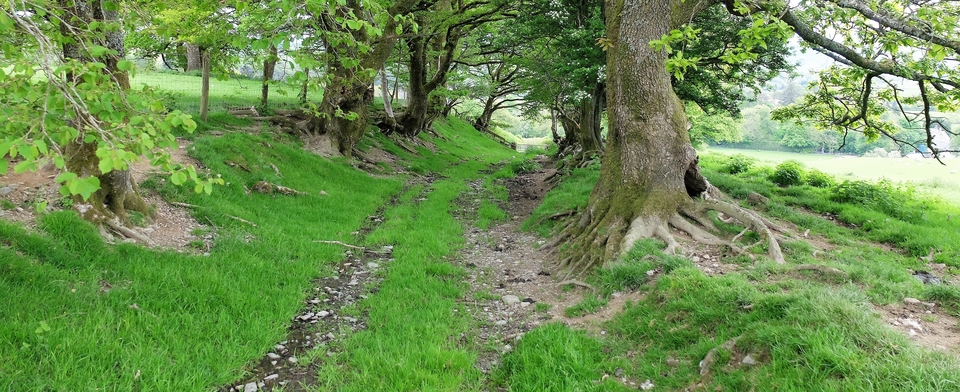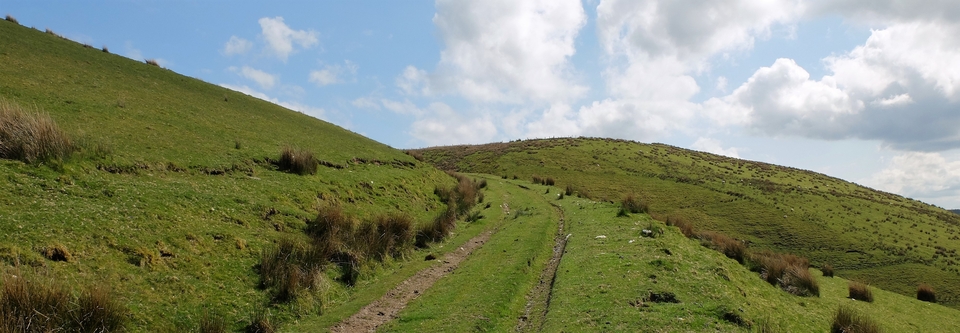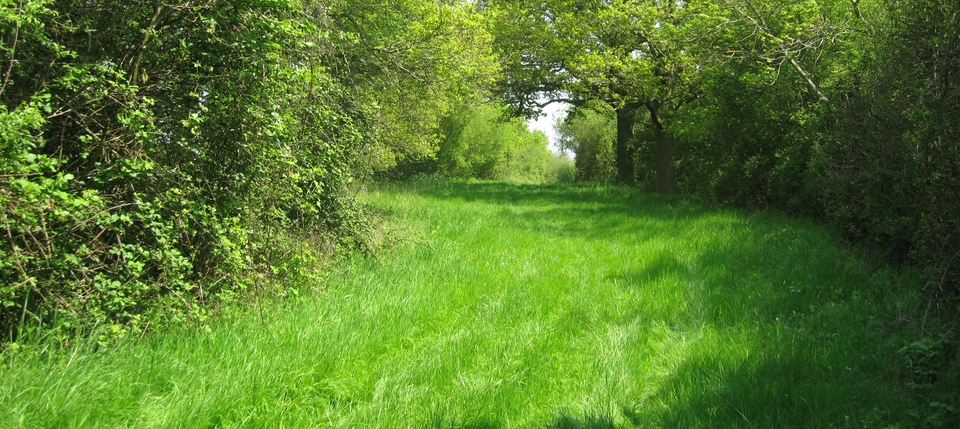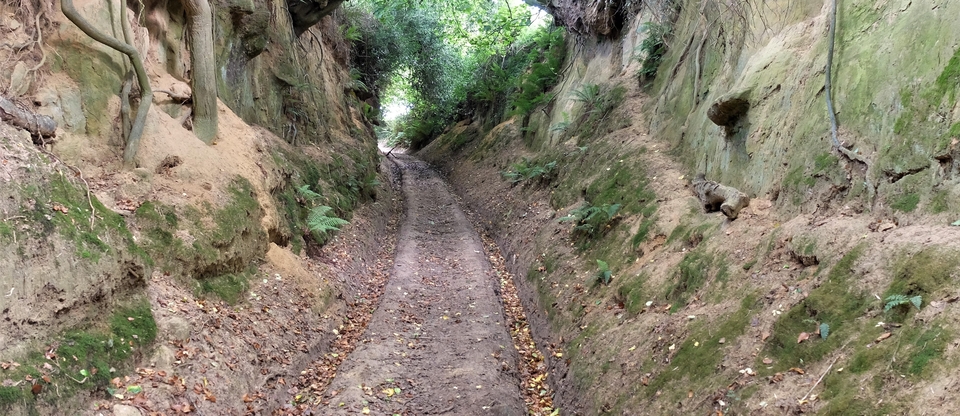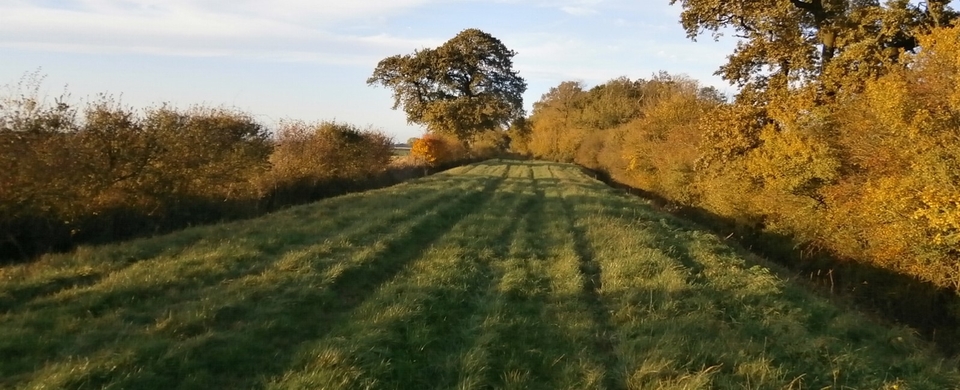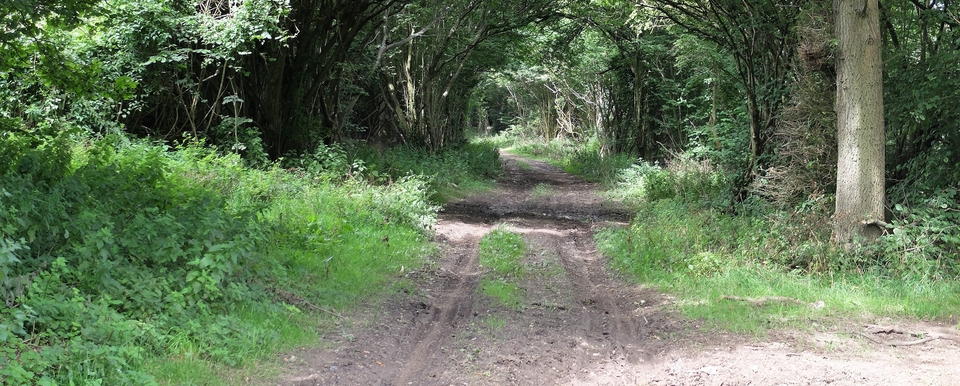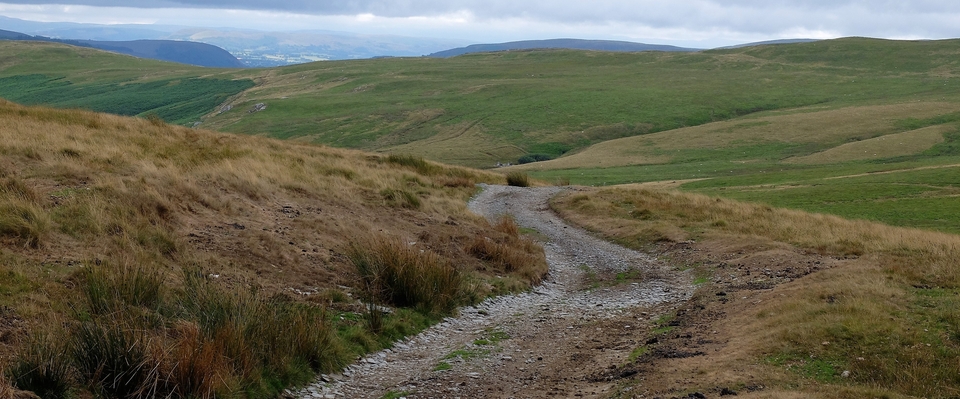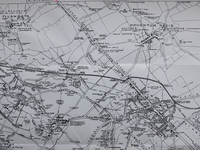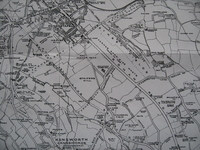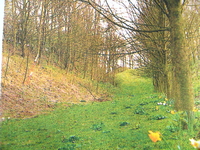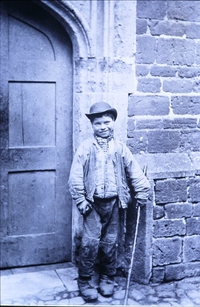Dunstable, Hockliffe & a Drover's Boy
PORTRAIT of a DROVER'S BOY
The following letter, which I have abridged, appeared in The Gentleman's Magazine. The writer called himself “A. Rambler” and his greeting was to “Mr Urban”. My thanks to Chris McCann for finding it.
“Having rambled to the junction of the two roads upon Chalk Hill1 on the sultry morning of July 24th 1797, I rested until a boy, trudging & singing at a great rate, came up to me. ‘Come along the old road2, Sir,' said he, ‘it is a mortal sight nearer, and I suppose you are thinking which to take.'
“I found my companion a most famous little chatterer, not much above three feet high and 15 years of age. He told me he had been to Smithfield with some sheep; that he went every week and had 30 miles3 to walk before night. His frock [smock] was completely bound up and tied across his shoulders. Turnpike tickets were stuck in his hatband, noticing the number of sheep he had paid for, and the lash of his whip was twisted round the handle, which he converted into a walking-stick.
“I soon found so small a being was a character of no small consequence upon the road; and he told me any... cart would give him a lift for nothing. He was familiar with everyone we passed...
“He wanted no hints to make him loquacious; and thus his busy mind unfolded itself. – ‘Now, Sir, do you know, I have a very good master; and he promises, if I behave well, to make a man of me4. When I went to live with him, I was a poor ragged half-starved parish boy, without father or mother... I have now two better coats than this [which, by-the-bye, was complete shreds of darn and patch-work], and a new hat.... And I am to learn too (proudly stretching himself and brushing up his eye-brows), my master says, to write.'
“I asked him if he could read – ‘Aye, in the Testament. I have almost finished the Gospel according to St. John; and I can repeat the Lord's Prayer and Belief too' – the latter of which he ran over as quick as possible, and asked me if he had missed a word.
“We kept tripping on, and met a poor forlorn creature, an infant fastened to her back, and two sweet children... In a flood of tears [she] told us, her husband had just been transported...to Botany-Bay, and she was trying to reach her parish... My little drover plaintively said, ‘Poor woman! If my breakfast had not cost me eightpence this morning, I would have given you a half-penny.'
“I told him...he might have spared the poor woman a half-penny. ‘Ah! but I have only seven-pence half-penny left to carry me home.' On enquiring how his breakfast could cost him eight-pence... ‘Why, I called at Dunstable to get some bread and cheese and a pen'worth of beer. Some hot rolls and butter looked so nice i could not keep my eyes off; and so the landlady asked me if I would have some tea. I was too hungry to refuse...'
“The native simplicity with which he delivered himself made him rise rapidly in my good opinion; and, as we paced on, he repaid every nod he received with manifold interest.
“We were passing a public house at Hockley in the Hole5, where he said he often baited6, but he liked my company so well, if I would let him, he would go on with me. Seeing two women come out of the house and beckon to him, I persuaded him to go to them; and I left them in the midst of life and joke in which the merry noise of my hearty little drover was pre-eminent ; and as I was turning a corner which took me out of sight, he shrilled out, ‘God bless you!' ”7
1 Chalk Hill (TL 016236), originally known as Puddle Hill, got its chalky name after the area was used to store limestone for the upgrading of Watling St. north-west of Dunstable. (The big upgrade came in the 1830's with Telford – the first roadworks paid for by Central Government since the Romans!)
2 See #1, 2 & 3. The old stock-way (“Sock Way” on map) comes off Watling St just above the northern edge of the map where there is a pink mark. It bypasses Dunstable to the east and becomes “British (now corrupted to Beech) Road”; then rejoins Watling St at 050179 – all (probably) to avoid the toll at 042198 Turnpike Farm.
However, the boy was, we think, not referring to the Sock Way as the "mortal sight nearer" route, but to the Roman Road - as opposed to the 1782 pre-cutting 'Old Coach Road'. In which case he must have met "Rambler" at the crossroads between Totternhoe & Houghton....
...on the other hand, if he met Rambler in between Sewell & Puddle Hill, he was referring to the drovers' route, the Sock Way..
...Oh, I don't know!
(#3 was taken on the "Former Sock Way" just south of Sewell.)
My deep thanks to Peter Mayne of Eaton Bray for supplying me with all this information, the map & the photo. (The last, he hastened to tell me, was not taken by him!)
3 The boy was going north after his delivery of sheep. Possibly to Northampton, 30 miles distant.
4 The boy was lucky indeed. Mr W Hamilton Reid, writing in the same magazine some years later, writes of boys of five years old being employed at Smithfield; of their “truant-playing”, especially in the summer, and staying out all night to be employed by drovers; of their being left to live with prostitutes at lodging-houses etc. Drovers, he says, should employ “none but regular apprentices”.
5 Now Hockliffe. According to the Leighton Observer of 1894, there were 12 inns there "at one time". Going southwards, they were:
- Fleur de Lys
- King's Arms
- The Swan (where the Manor House stood in 1894; used by drovers)
- The Star (landlord "Fetch-it-Yourself" Crouch was the 19C Basil Fawlty.)
- The Magpie (a beer house nicknamed 'Tingey's Alley'. The landlady was known as "Molly Screw" because she was mean - & tough! - enough to bite farthings in half.)
- The White Horse (Fine Elizabethan carving; "ample stabling"; an important & prestigious coaching inn - the whole yard was surrounded by sleeping apartments.)
- The Red Lion (another popular drovers' inn)
- The George (beer house opposite the Red Lion in what was called "The Square")
- The Old Red Lion
- The Blackbirds (afterwards Hockcliffe House; used by drovers & 'stage wagons'. The latter were huge, slow carts pulled by 8-10 horses carrying heavy goods where canals were not available. Poor people travelled on them too; the fares were cheap. The team of horses was relieved every 20 miles.)
- The Bull (now Bull Farm at SP 978262. Used by large droves of beasts 'from Leics & Warks'. The huge pastures at The Bull were mown to provide hay for them. Stage wagon stopping-place.)
- The Bell (near The Bull) catered for the coal-carts (loaded up at the Grand Union Canal in Leighton) taking fuel to Luton & Dunstable.
6 ‘Bait' = refreshment for man or beast.
7 See #4. It is taken 100 years later at Canons Ashby, but the two boys would have had a lot to say to each other.
